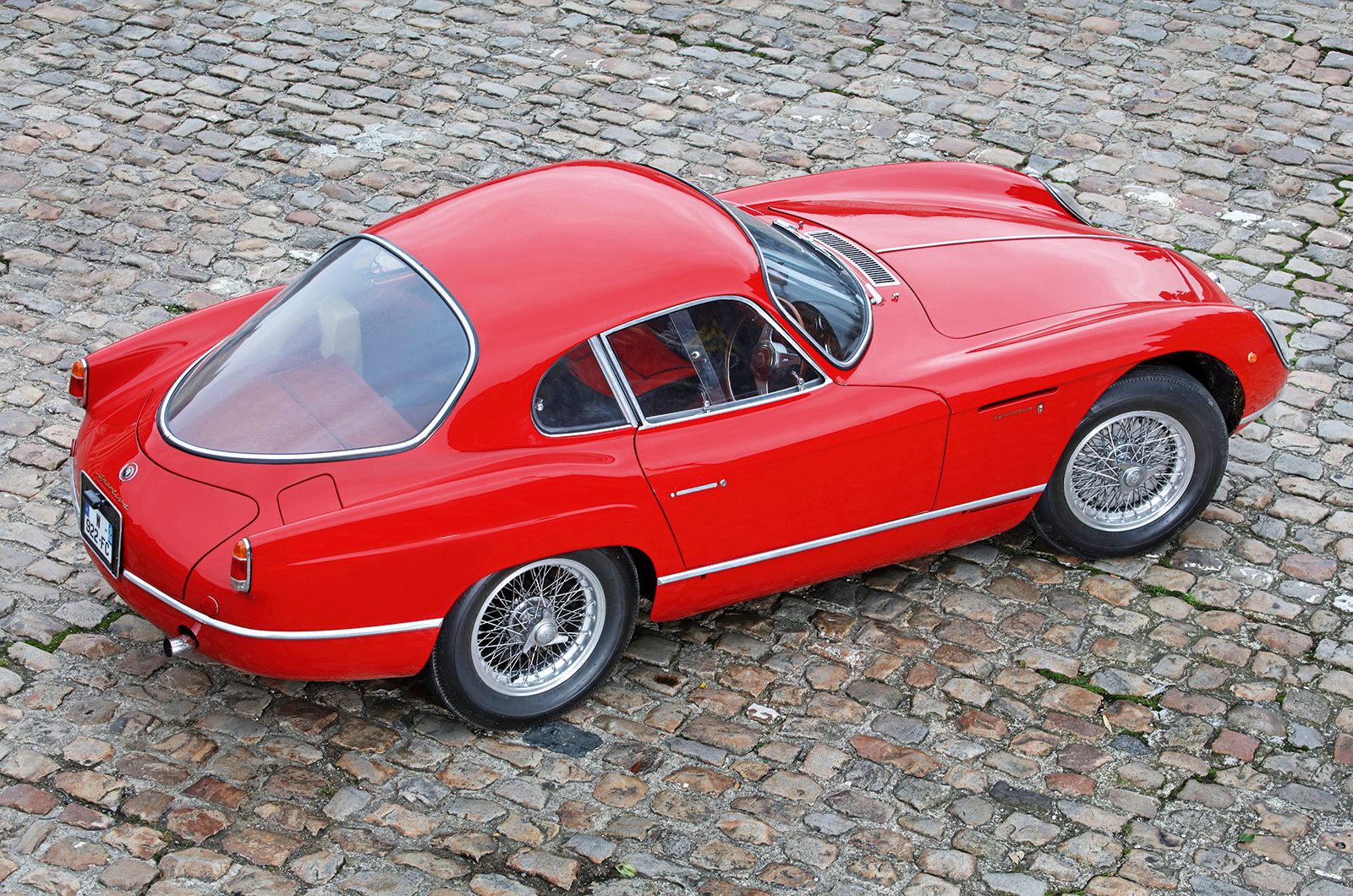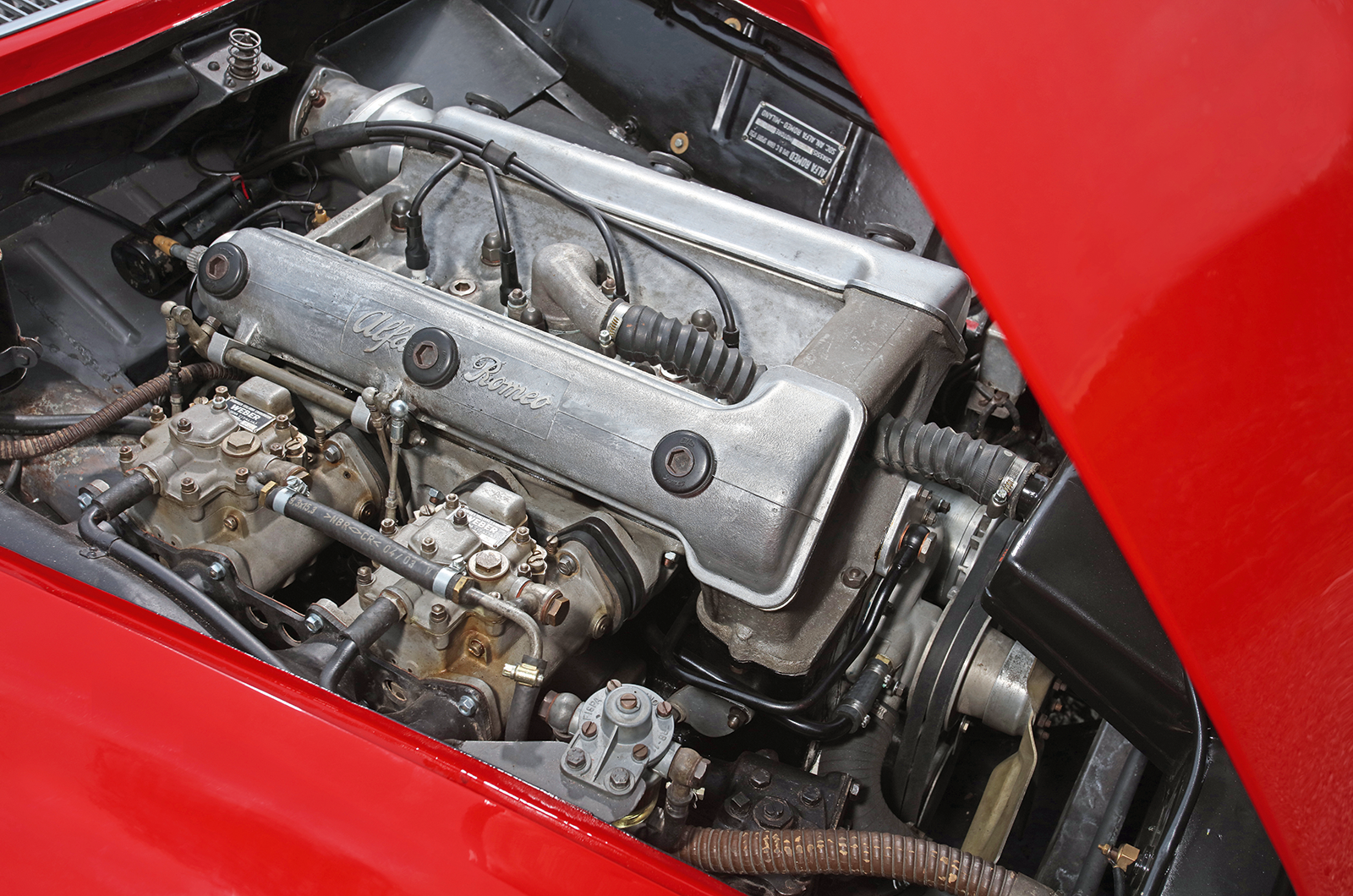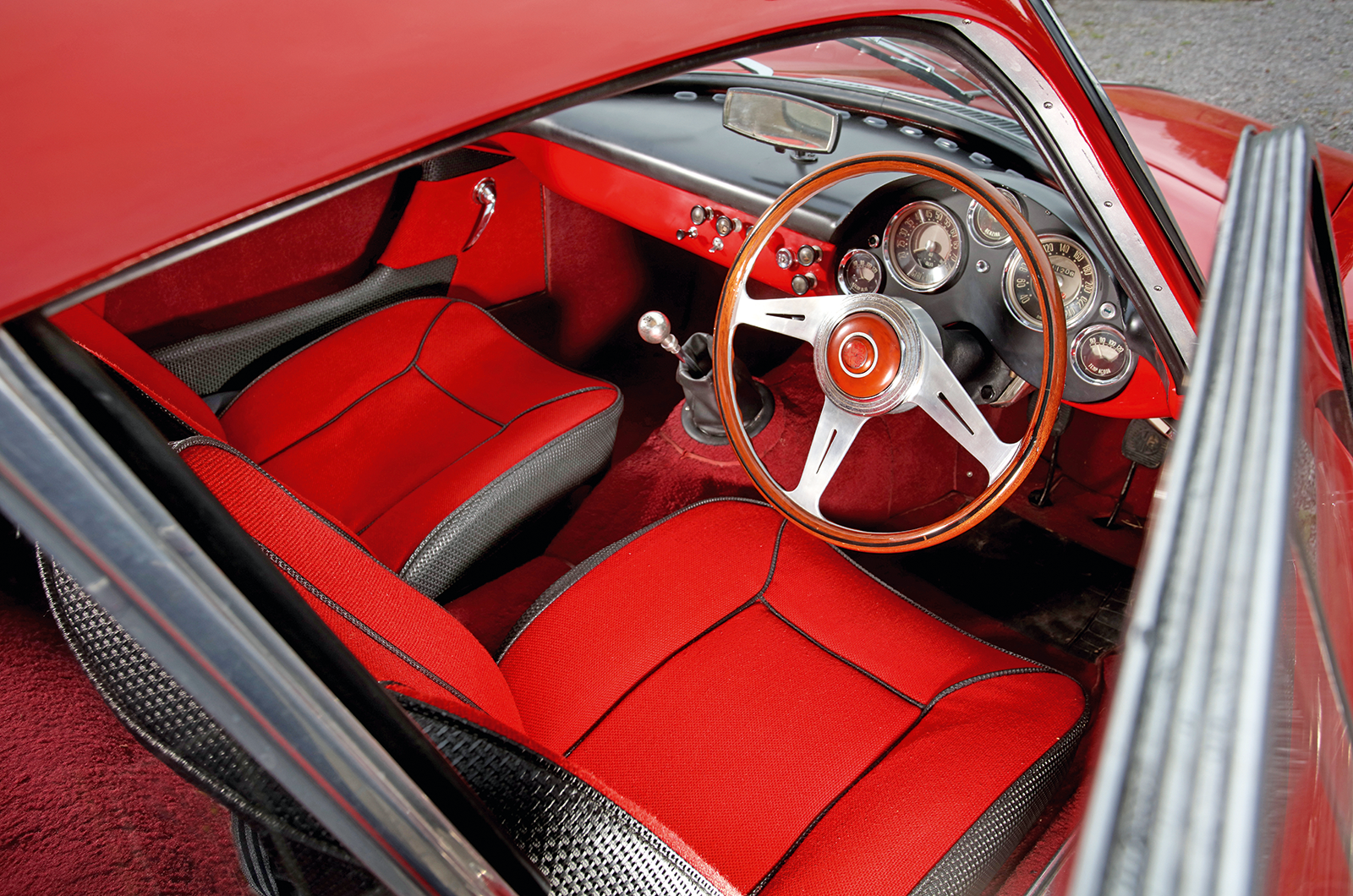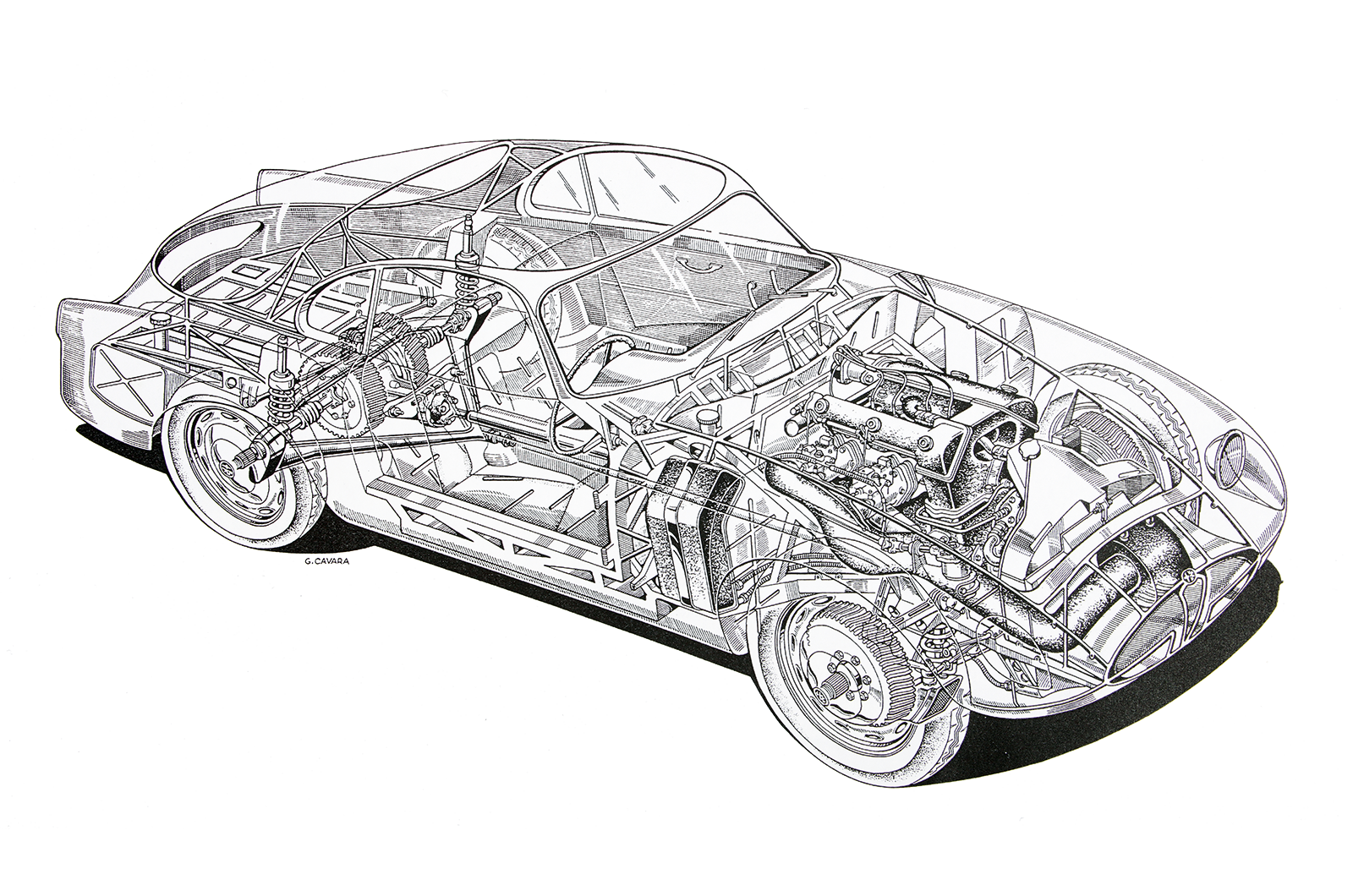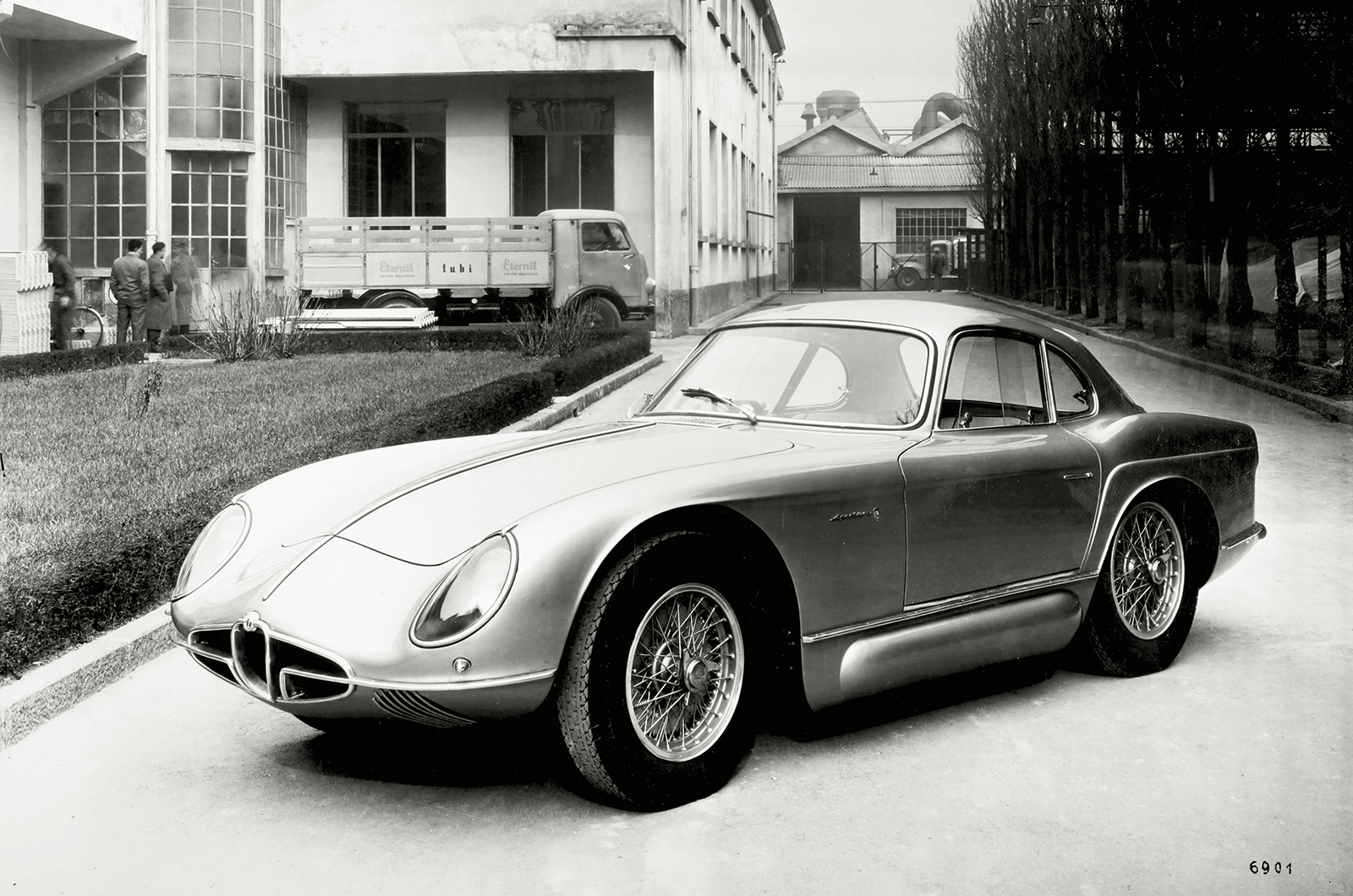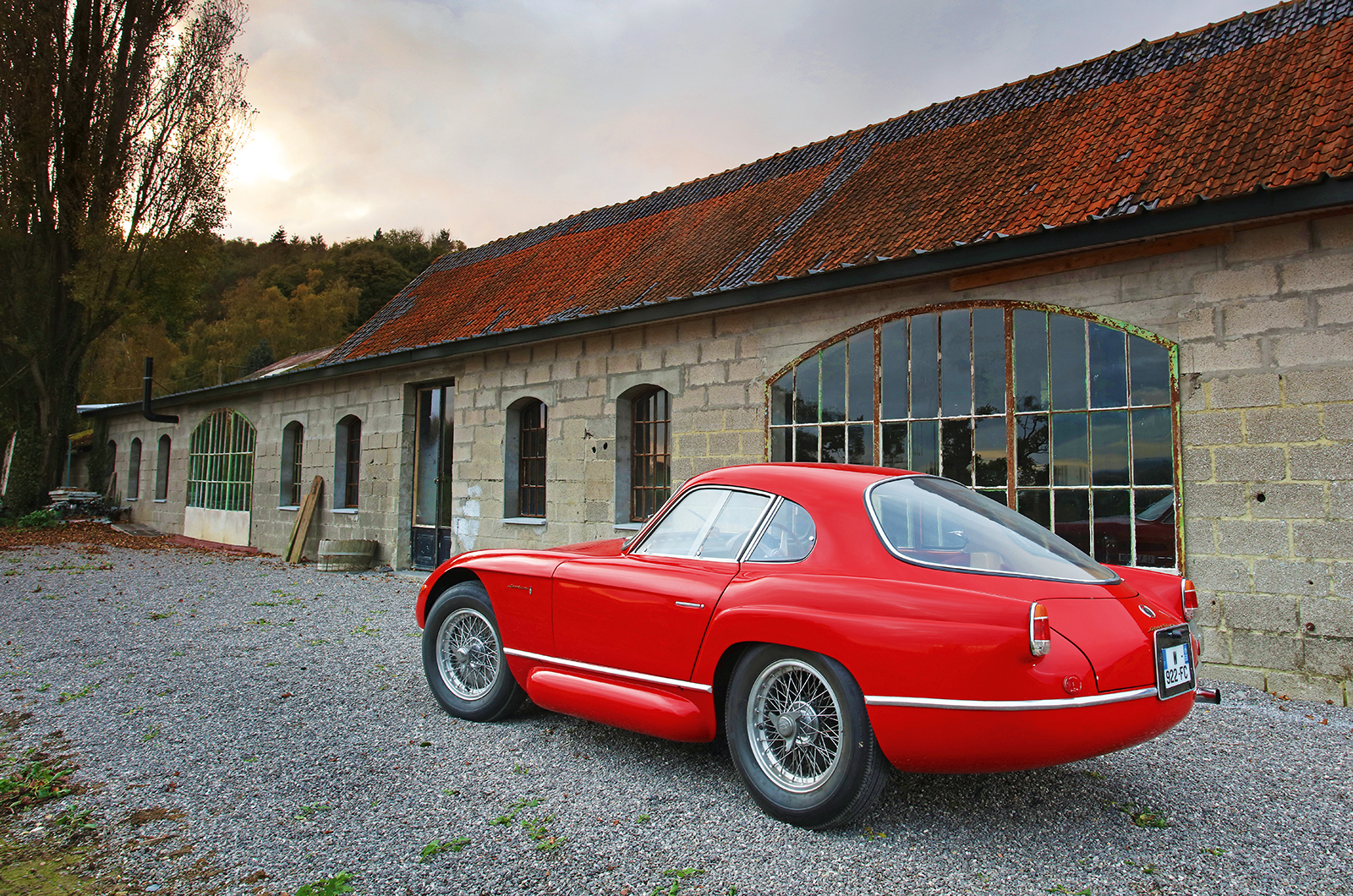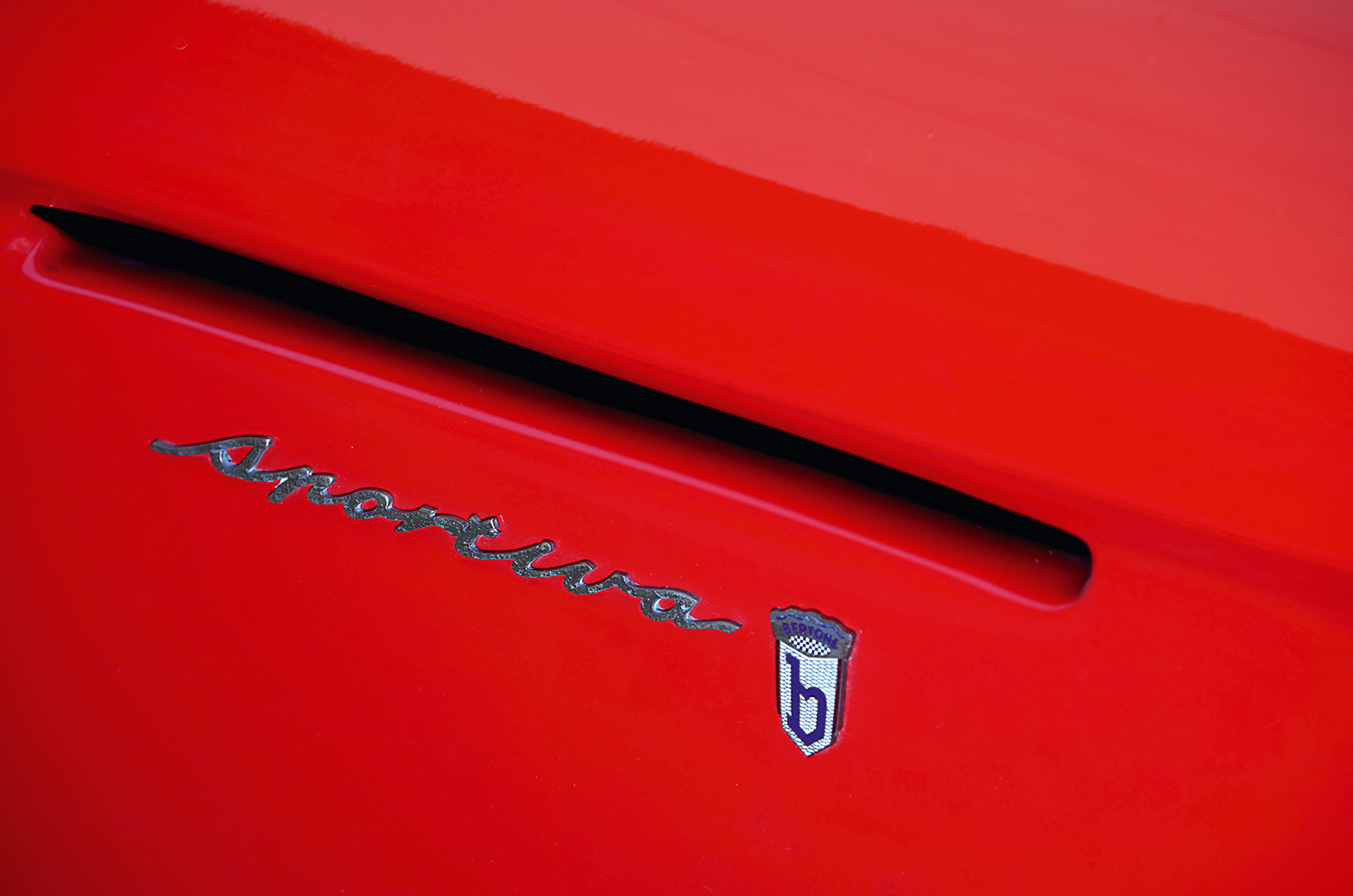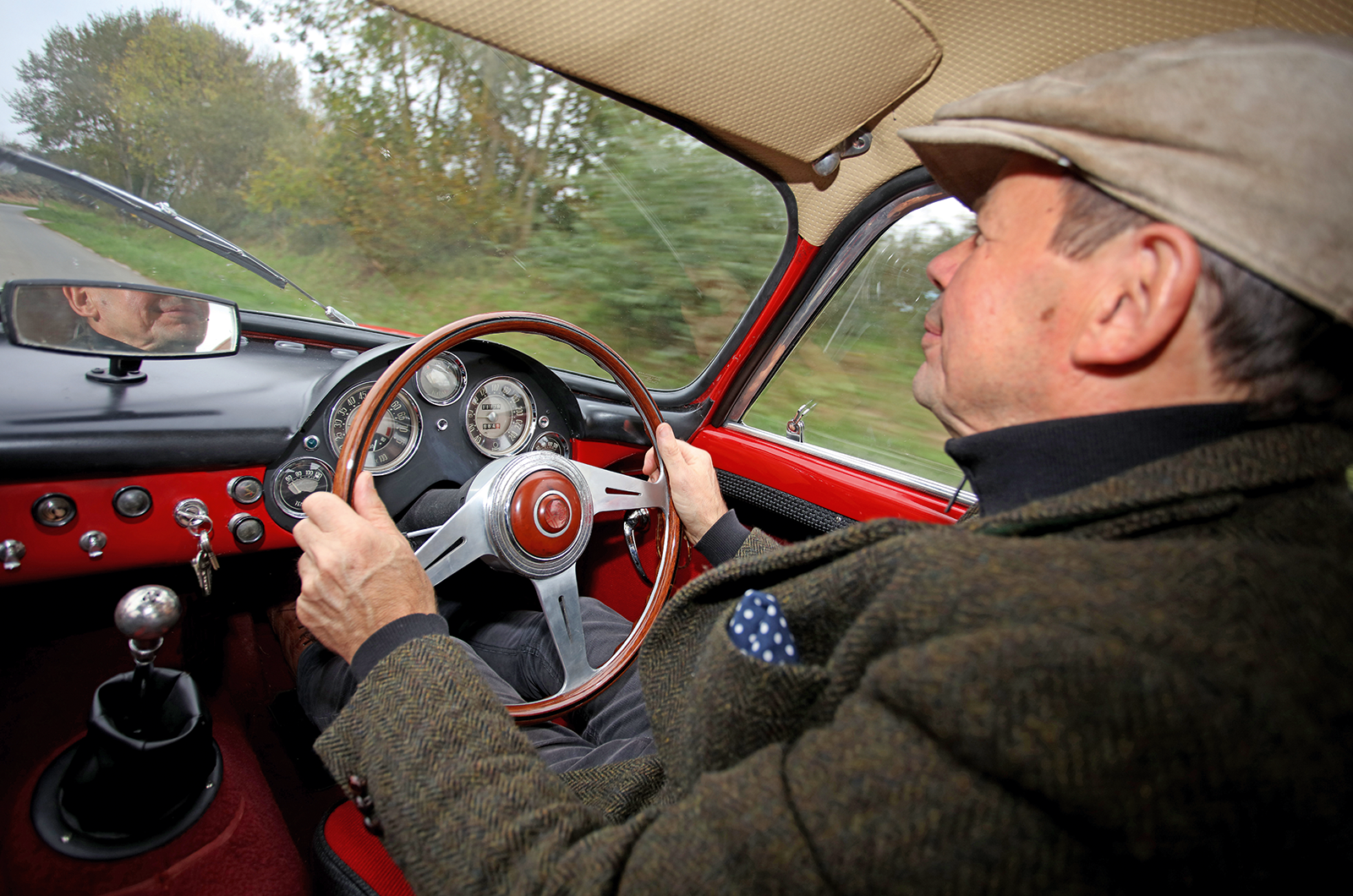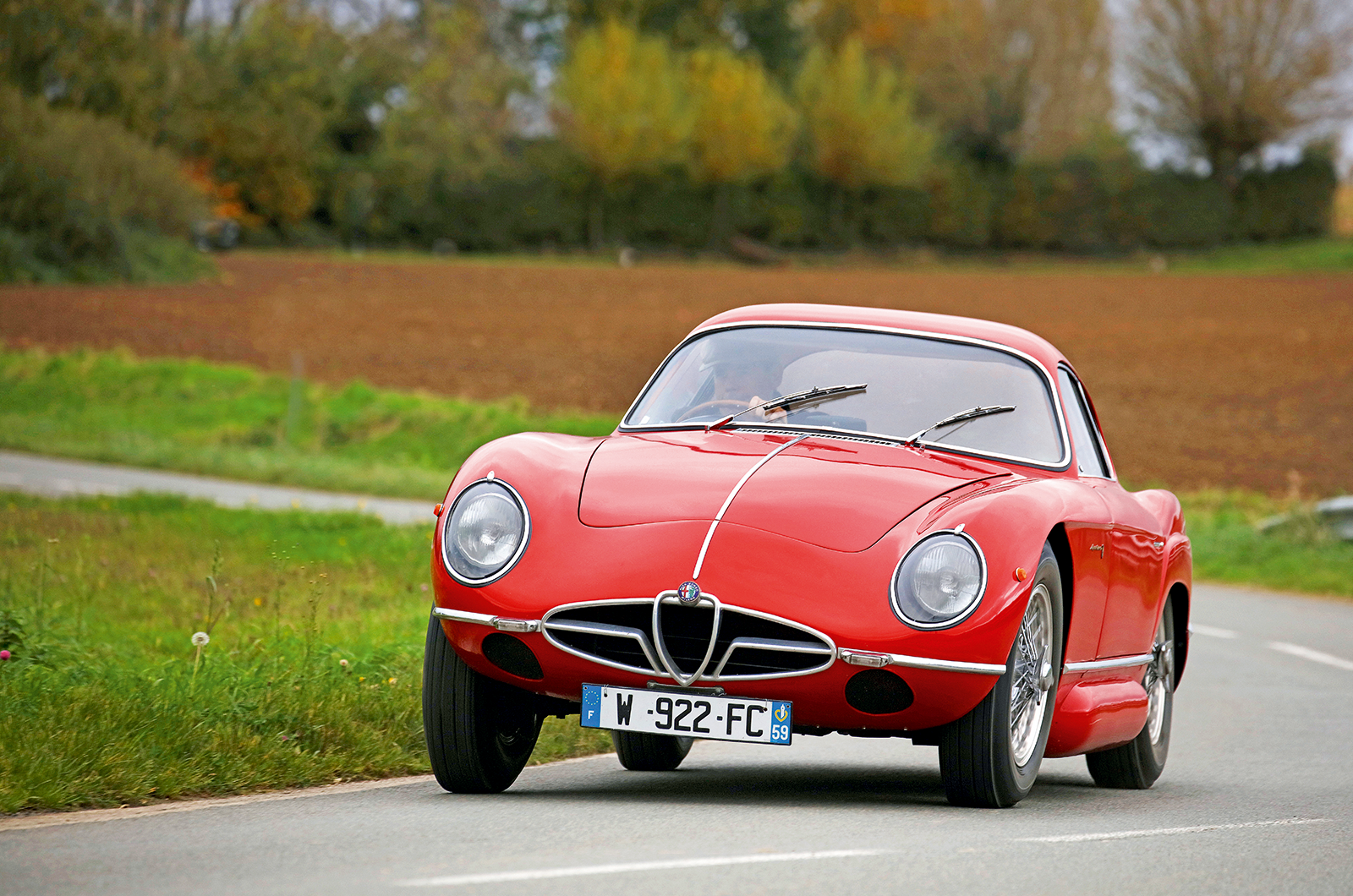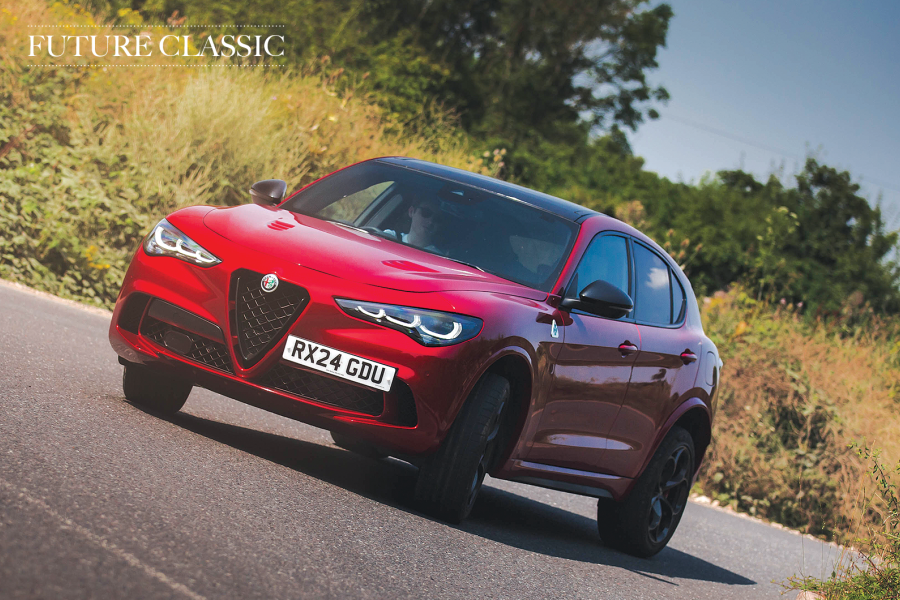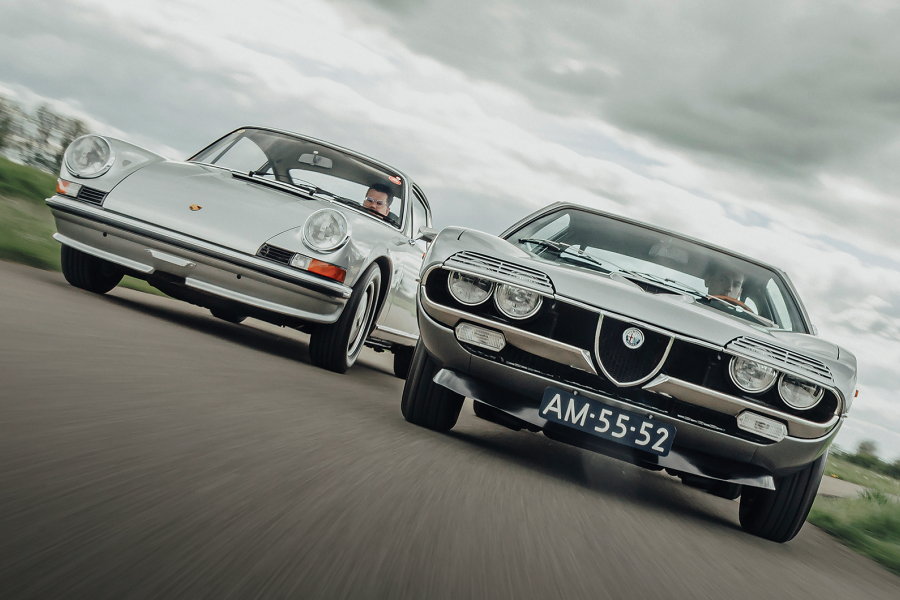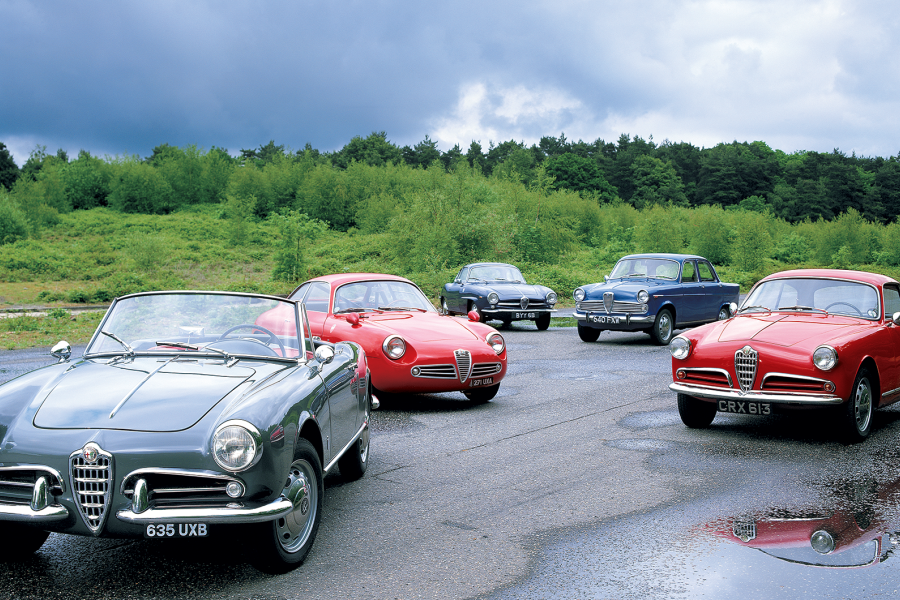Time for that eagerly awaited drive on Pund’s favourite local roads. Push the door button and the handle finger pops out.
After stepping over the high sill, you slide under the low, broad steering wheel and drop into the two-tone seat, which stylishly combines red cloth with a black vinyl weave.
The side spokes of the Nardi wheel angle distinctively downwards to allow a better view of the neat instrument binnacle, with bold rev counter redlined at 6500rpm and speedo marked to 240kph. The smaller gauges monitor oil and water temperature together, plus fuel level.
It’s a cramped affair two up, but the view framed by the slim pillars is panoramic. As the gruff ‘four’ warms, its strident exhaust – fed via the passenger-side sill – fills the cabin as it heats up. You’d cook on a summer day in Italy, with only the sliding Perspex windows for cool air.
As we motor out of town over stretches of pavé, the Sportiva – with its long, baulky gearchange gate and slightly offset pedals – feels basic, light and noisy, but a transformation takes place once you’re onto clear roads. The cammy engine feels rough and reluctant below 4000rpm, but the power really punches with turbine smoothness and eagerness to rev and rev once it clears its throats.
The five-speed gearbox matches the motor, with slicker action through the short stubby lever, and soon the Sportiva is in a groove attacking the sweeping hills around Cassel, its rorty bark singing out across the fields.
The Alfa rolls more than expected through corners on the tall tyres, but the short chassis feels neutral and balanced. The slow steering dates the design, but its weighting improves at speed, with sharper turn-in, while the drum brakes have a dead, heavy feel – but that could well be down to lack of use and old rubber.
Gorgeous Alfa Romeo leans more than you might expect, but feels impressively balanced through fast sweepers
Overall, the Sportiva feels like a racer that needs to be taken by the scruff of the neck and driven hard to get the best out of it – the perfect machine for a morning blast around the route of the Coppa d’Oro delle Dolomiti, attacking Passo Tre Croci en route to an espresso in Cortina.
Maybe some day we’ll see a proper tribute to the great Franco Scaglione, with a full set of his breathtaking designs.
One of the most inspired automotive exhibitions in recent times was L’Idea Ferrari, staged in the Forte di Belvedere in 1990, where landmark designs were presented in glass cases around the beautiful Boboli hills overlooking Florence.
Just imagine the Sportiva arranged with the amazing BAT Alfa trio, Porsche Carrera Abarth, ATS 2500GT, Arnolt Aston Martin and Bristol, Alfa Giulietta Sprint Speciale, plus the breathtaking Tipo 33 Stradale.
Scaglione’s styling legacy is worthy of any fine art display, but his birth city would be the perfect place for such a remarkable gathering. Now that would rival Michelangelo’s David in the Accademia Gallery.
Images: James Mann
Thanks to Christophe Pund and Ben Hendricks
READ MORE
An Alfa Romeo Giulietta Sprint like no other
Pebble Beach Alfa crowned best car in the world
Future classic: Alfa Romeo Giulia
Mick Walsh
Mick Walsh is Classic & Sports Car’s International Editor

